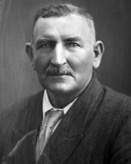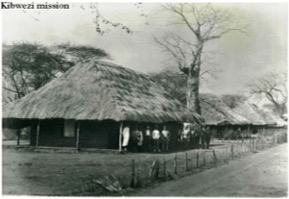The Other John Paterson
Many of us have heard of the John Patterson who was involved in overcoming the man- eating lions of Tsavo. But there was another man of the same name who had an important, if not so spectacular role. The other John Paterson brought both coffee and fruit seeds to Kenya. In 1891 the East African Scottish Missionary Society was founded by Sir William McKinnon (who also created the Imperial British East Africa Company), to shoulder the Company’s responsibilities towards the native races under the control of the new chartered company. On 19 September that year the Scottish East African Mission party, led by Dr James Stewart, set off for the interior. The intention was to establish a mission at Dagoretti but, due to differences with the Kikuyu, the group stopped at Kibwezi where land was bought, coffee planted, and buildings erected.

John Paterson (later Patterson)
Two years later, in 1893 John Paterson, a gardener, set out to join the mission. Legend has it that he trained at Kew, but he does not appear in their records. He planted coffee, grapes and vegetables at Kibwezi. By 1896 the mission was able to provide seeds to other planters. In 1898 Thomas Watson, the leader of the mission, moved it to Baraniki near Dagoretti, as had been the original intention. On return from leave in 1899, Peterson brought with him more coffee seeds and some fruit trees. The coffee seeds had been brought from Sheikh Othman (not a person, but the Church of Scotland Mission in Aden, where the missionary probably disembarked and obtained them).

Kibwezi Mission where John Paterson sowed over 10,000 coffee seeds in 1899.
Paterson sowed over 10,000 coffee seeds in 1899, and obtained 500 plants from them. A little disappointed, he wrote: ‘The slowness of the seed in germinating and the failure of so much seed to germinate is not in my opinion to be attributed to unsuitability of soil and climate but to inferior seed and lack of efficient irrigation of the seed beds.’ He complained that the coast men who dug the seed beds were inefficient and suggested that horses should be bought. He also disliked the destructive grubs which infested the soil. At the end of the 1890s the mission also had to contend with drought, famine, rinderpest and smallpox. Then Watson died in December 1900, leaving only two people to work the mission. In 1900 the general management of this mission was taken over by the Church of Scotland, with an endowment of £50,000 from the IBEA Company.
Paterson, a mainstay of the mission’s agricultural work, left the mission in 1903 to take up farming on his own account. He applied for, and acquired in 1904, 1000 acres at Ngong on the Mbagathi river. According to the ‘Report of the Agricultural Conditions in the Kikuyu District’ in 1904 Paterson had cleared five acres and had half an acre of mixed vegetables, one acre of potatoes, three quarters of an acre of oats and one acre of maize. He also had six cows, seventeen bullocks and two ploughs, and he employed ten Wakikuyu at 4 rupees a month. Later Paterson moved to Thika Rapids Farm at Mitubiri, where he planted coffee and a long avenue of naartjies (mandarin oranges). For some reason, possibly because he was fed up with people misspelling it, he changed his name by deed poll to ‘Patterson’ in 1921. He lived as a recluse for many years until his death on the farm on 10 September 1940, leaving his assets to Dr Barnardo’s Homes. He was buried in Forest Road cemetery, Nairobi, where his gravestone reads’ One of Kenya’s Pioneers’. According to his gravestone and his obituary notice in the East African Standard, he had been born in 1865.
www.christinenicholls.co.uk

Recent Comments